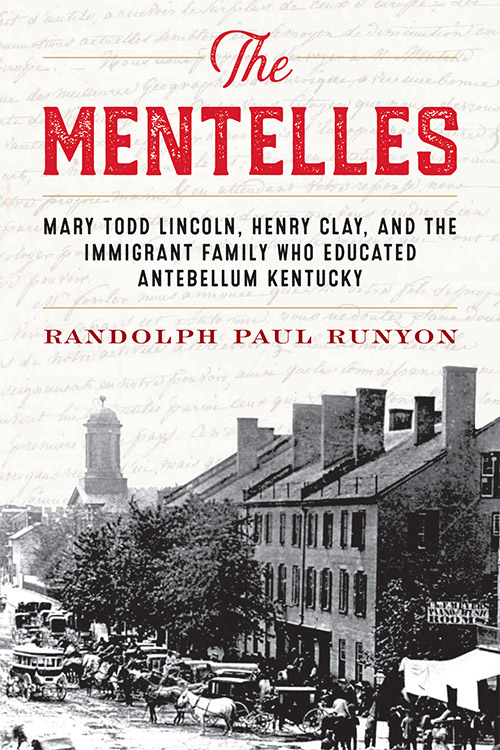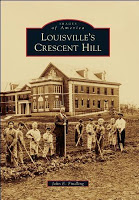The Historic Kentucky Kitchen (Traditional Recipes for Today’s Cook)
by Deirdre A. Scaggs and Andrew W. McGraw
University Press of Kentucky
Paperback, $29.95
Review by Chef Madeleine Dee
Entire contents are copyright © 2013, Madeleine Dee. All rights reserved.
When I was very young, I discovered an exhibit at a museum where I could dig up a dinosaur like a paleontologist. I stayed right there, covering the bones with dirt and brushing them back into view over and over again for a couple of hours until my parents insisted that I go and look at some other parts of the museum. From that point on, I was completely hooked on history and I planned to be an archaeologist until I got to college. I am now a chef, actress,and writer, but I still fantasize often about uncovering the past for a living. So I was over the moon when I was asked to review a cookbook about Kentucky’s food history.
The Historic Kentucky Kitchen by Deirdre A. Scaggs and Andrew W. McGraw is a tiny book – it has only 163 pages (Notes, Resources and Index included). However, it is absolutely packed with interesting facts, tips and photographs that bring the recipes inside to life and connect the written instructions with the Kentuckians who prepared these meals between the 1870s and the 1960s. The recipes as originally written could be quite confusing to modern cooks, but the authors made sure to adapt each one so that everyone today can prepare the dishes with ease. They even included a couple of pages documenting substitutions for items like outdated fats, conversions for modern ovens, and measurements like “Butter the size of a walnut,” which is roughly 2 tablespoons. These pages were a great addition for bringing this cookbook into modern times.
The historical context is absolutely fascinating. One quote that resonated with me was the very first sentence: “Cookbooks and their recipes are important and historically revealing, because in addition to techniques of food preparation, they give us an understanding of people’s lives.” This statement began the Foreword by John van Willigen, the Professor Emeritus of Anthropology at the University of Kentucky, and I think his words are spot on. Leafing through the pages of this book gave me a genuine sense of how life was for Kentuckians many years ago – slower, more simple, much more focused on the preparation of local, organic meals. Food was something that was made by hand and was shared with loved ones. He also mentions that “handwritten recipes can be a link with the past.” I agree – handwriting is very personal and gives you a sense of what mattered to the writer.
The inspiration for this cookbook was the discovery of an unnamed recipe from Logan English that included zucchini, tomatoes, anchovies and eggs. It was apparently so delicious that it started an adventure for the two authors, who set out to discover other “receipts” (an old time word for recipes) in UK’s collection of archived recipes from the 19th and 20th Centuries. They focused on handwritten recipes because they “seemed more cherished, more likely to have been used to prepare food in Kentucky homes” and appeared to be “more traditional and authentic.”
Some of the most prominent recipe contributors were Lucy Hayes Breckinridge, Frances Jewell McVey and Louise Ludlow Dudley. There were 12 other individuals and families listed in the recipe titles. I found it interesting that these recipes were some of the only documentation of their lives. I was really impressed by Lucy Hayes Breckinridge having 25 recipes in this book, and I wanted to know more about her. But a Google search turned up absolutely nothing other than the names of some of her family members, the dates of her birth and death, and a strange quote about her from a relative. I wish I could know more about her life, but I think it’s very cool that her culinary knowledge will live on in The Historic Kentucky Kitchen, even if very little else about her is documented.
This book has eight sections of recipes: “Eggs and Cheese Dishes,” “Biscuits and Breads,” “Sides,” “Soups and Stews,” “Main Courses,” “Desserts,” “Beverages” and“Accompaniments.” Flavor influences for the dishes range between African, French, English, American and Southern, which makes for an interesting variety. In the back, the resources are listed and there is some information about the recipe writers/collectors. I would only recommend the “Desserts” section to experienced bakers, because you need to know what you’re doing in order to follow the sometimes odd instructions. “Beverages” was fascinating with recipes for things like Blackberry Vinegar, Ginger Tea and Porter Soda. Pickles, Ginger Nuts and Strawberry Syrup were items that caught my eye in the “Accompaniments” section. A couple of recipes that made me giggle were for Coffee and for Boiled Cauliflower. No two things could seem simpler, but I bet the results are just right!
My only personal issue with this cookbook is that many of the recipes use dairy products liberally, and I am lactose intolerant. Most people are not, so this book is a great choice for the majority of cooks and eaters; but I don’t recommend it for people like myself who have problems with milk, cream and other dairy products. I thought a lot of dishes sounded great, but I wouldn’t have been able to enjoy them.
I did prepare a dish: Logan English’s Chicken! It was delightful and turned out perfectly. The taste was really unique and I enjoyed it immensely. Keeper! Other recipes that I can’t wait to try: Cheese Souffle, Frances Jewell McVey’s Coffee Cake, Lucy Hayes Breckinridge’s Corn Soup, Nannie Clay McDowell’s Burgoo, Louise Ludlow Dudley’s Fried Chicken… I pretty much want to make everything!
All in all, I would highly recommend this cookbook. I really loved the old black-and-white photographs scattered throughout the pages, and I especially enjoyed the descriptions and notes about each section and about each recipe. I read this cookbook like it was a novel and learned a surprising amount about Kentucky’s culinary history. The recipes and notes effectively transport you to another time when making meals by hand and sharing them with others was an everyday thing, quite unlike the eating habits of most folks here in 2013. I often wish that I had the time to prepare big meals for my loved ones on a regular basis. Perhaps with the help of this book, I’ll take a day or two off from work every now and then so I can do just that.
http://thehistorickentuckykitchen.wordpress.com/featured-recipes/





